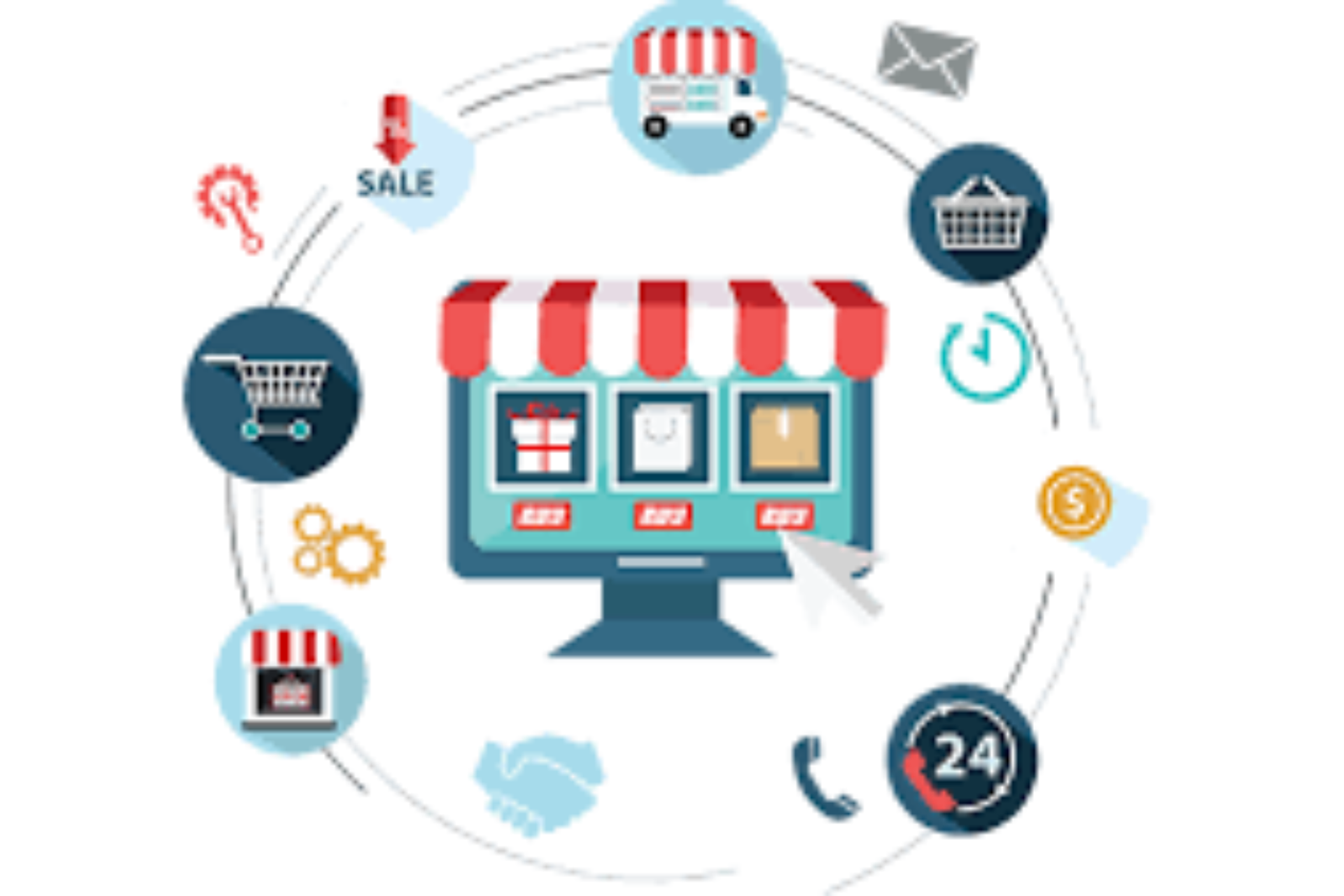E-commerce, or electronic commerce, refers to the process of buying and selling goods or services using the internet, along with the transfer of money and data to complete these transactions. The rise of e-commerce has revolutionized how businesses operate, enabling companies to sell products and services to customers around the world, 24/7. E-commerce development is the backbone of this digital marketplace, involving a blend of web design, development, payment gateway integration, and ensuring a seamless customer experience. This article will explore the key aspects of e-commerce development, the different types of e-commerce, technologies involved, and the process of building an e-commerce platform.
Types of E-Commerce
Before diving into e-commerce development, it's essential to understand the various models of e-commerce, as these influence the development process. The four main types of e-commerce are:
Business to Consumer (B2C): This is the most common form of e-commerce where businesses sell directly to consumers. Examples include retail giants like Amazon, Alibaba, and eBay. In this model, customers browse the online store, select products, make payments, and have the goods delivered to them.
Business to Business (B2B): In B2B, transactions occur between businesses. These platforms facilitate bulk orders, long-term contracts, and provide access to wholesale pricing. Companies like Alibaba and Thomas Net are examples of B2B e-commerce platforms.
Consumer to Consumer (C2C): This model allows consumers to sell products to other consumers. Examples include platforms like eBay and Craigslist, where individuals can list products for sale.
Consumer to Business (C2B): In this model, consumers offer products or services to businesses. A common example is freelance platforms where individuals offer services (such as graphic design or writing) to companies.
Key Components of E-Commerce Development
Developing an e-commerce platform involves multiple steps and requires attention to detail in several key areas:
Website Design and User Interface (UI)
The design and user experience (UX) of the e-commerce website are crucial to its success. A well-designed website enhances navigation, making it easier for users to find and purchase products.
Key design elements include a clean layout, intuitive navigation, and responsive design (mobile-friendly). A mobile-responsive site is essential since more consumers are shopping via mobile devices.
The interface should include key sections such as the homepage, product catalo, shopping cart, checkout page, and customer support.
Product Catalo and Inventory Management
The product catalo serves as the online store’s catalo, containing all available products along with their descriptions, pricing, and images.
Inventory management tools are integrated into the development process to ensure that product availability is accurate. This system helps businesses keep track of stock levels, set up automated stock updates, and manage backorders.
Shopping Cart and Checkout Process
The shopping cart allows customers to add items they wish to purchase, review their selections, and proceed to checkout. The checkout process must be simple and secure, asking for only the essential information like shipping address, payment details, and delivery preferences.
Multiple payment options, including credit cards, PayPal, and newer digital wallets (like Apple Pay and Google Pay), should be supported.
Payment Gateway Integration
Payment gateways are critical for processing online payments. They act as intermediaries between the e-commerce site and the bank or payment processor. Popular payment gateways include PayPal, Stripe, and Authorize.Net.
Payment gateway integration ensures that transactions are processed securely and efficiently, with strong encryption and security measures like SSL certificates to protect sensitive customer data.
Security Features
Security is a significant concern in e-commerce, both for businesses and consumers. SSL (Secure Sockets Layer) encryption is crucial to protect user data during transactions.
Implementing two-factor authentication (2FA) during login and transaction processes can further protect customers from identity theft.
Security measures also include regular vulnerability testing and keeping security protocols up-to-date to protect against cyberattacks.
Mobile Compatibility
With the increasing number of mobile shoppers, developing an e-commerce platform that is mobile-friendly is crucial. A mobile-optimized website or an app version of the store can enhance the user experience and increase sales.
Mobile compatibility includes responsive design, touch-friendly interfaces, and features like one-click payments or simplified checkout for smaller screens.
Shipping and Order Management
Shipping integration with various carriers (like UPS, FedEx, and DHL) is essential for real-time shipping rate calculation, tracking, and delivery time estimates.
Order management tools are vital for tracking and managing customer orders, from order placement to dispatch and delivery. Integration with CRM (Customer Relationship Management) systems helps businesses maintain detailed customer records and manage orders effectively.
Customer Support and Engagement
Building effective customer support systems like live chat, helpdesks, and easy-to-navigate FAQs can enhance the customer experience.
Automated email confirmations, order tracking, and post-purchase follow-up emails are examples of engaging communication strategies that keep customers informed and engaged with the brand.
Technologies Involved in E-Commerce Development
E-commerce development involves the integration of various technologies to ensure smooth operation. Some of the core technologies used in building e-commerce platforms include:
Web Development Frameworks
Frameworks like Magento, Shopify, WooCommerce (for WordPress), and Presta Shop provide pre-built solutions for building and managing online stores.
For more custom solutions, frameworks like Ruby on Rails, Laravel, or Django are used for building highly personalized e-commerce experiences.
Databases
E-commerce websites rely heavily on databases to store customer information, product data, and transaction history. Common databases used in e-commerce are MySQL, PostgreSQL, and MongoDB.
Content Management Systems (CMS)
CMS platforms like WordPress with WooCommerce and Shopify make it easier for businesses to manage content, products, and sales without needing extensive technical knowledge.
These platforms come with pre-built themes, plugins, and integrations to streamline the development process.
Cloud Hosting and Scalability
Cloud hosting services like Amazon Web Services (AWS), Google Cloud, and Microsoft Azure provide scalable infrastructure, allowing e-commerce sites to handle increased traffic during peak times, such as during sales events or holidays.
SEO and Marketing Tools
SEO optimization is key to driving organic traffic to an e-commerce site. This includes optimizing product descriptions, using relevant keywords, and ensuring the site loads quickly.
Tools like Google Analytics, Mailchimp, and Hootsuite help with digital marketing efforts like email campaigns, social media engagement, and targeted ads.
The E-Commerce Development Process
Building an e-commerce website involves several phases:
Planning and Requirement Gathering
The first step is understanding the business model, target audience, and features needed for the online store.
This phase includes market research, choosing the right platform (self-hosted or SaaS-based), and selecting payment gateways, shipping carriers, and design elements.
Design and Prototyping
In this stage, web designers create wireframes and prototypes of the site layout. This phase focuses on defining the user experience (UX) and interface (UI).
Development and Testing
During this phase, developers code the site, integrating all necessary functionalities such as the shopping cart, payment gateway, inventory management, and user accounts.
Testing ensures that the site is bug-free, loads efficiently, and works seamlessly across different devices and browsers.
Launch and Marketing
After testing, the site is launched. Following the launch, marketing strategies like SEO, social media campaigns, email marketing, and PPC (pay-per-click) ads are deployed to attract customers.
Maintenance and Upgrades
a Post-launch, regular maintenance is necessary to ensure that the website runs smoothly, software is up-to-date, and security vulnerabilities are patched. Continuous improvements based on user feedback and business needs are also a part of long-term development.
Conclusion
E-commerce development is a complex and multifaceted process that involves the integration of technology, design, and business strategies to create a seamless online shopping experience. A well-developed e-commerce platform not only provides a functional and secure shopping environment but also fosters customer trust and satisfaction. With the growing importance of online shopping, businesses must prioritize e-commerce development to stay competitive and ensure continued growth in the digital marketplace.











